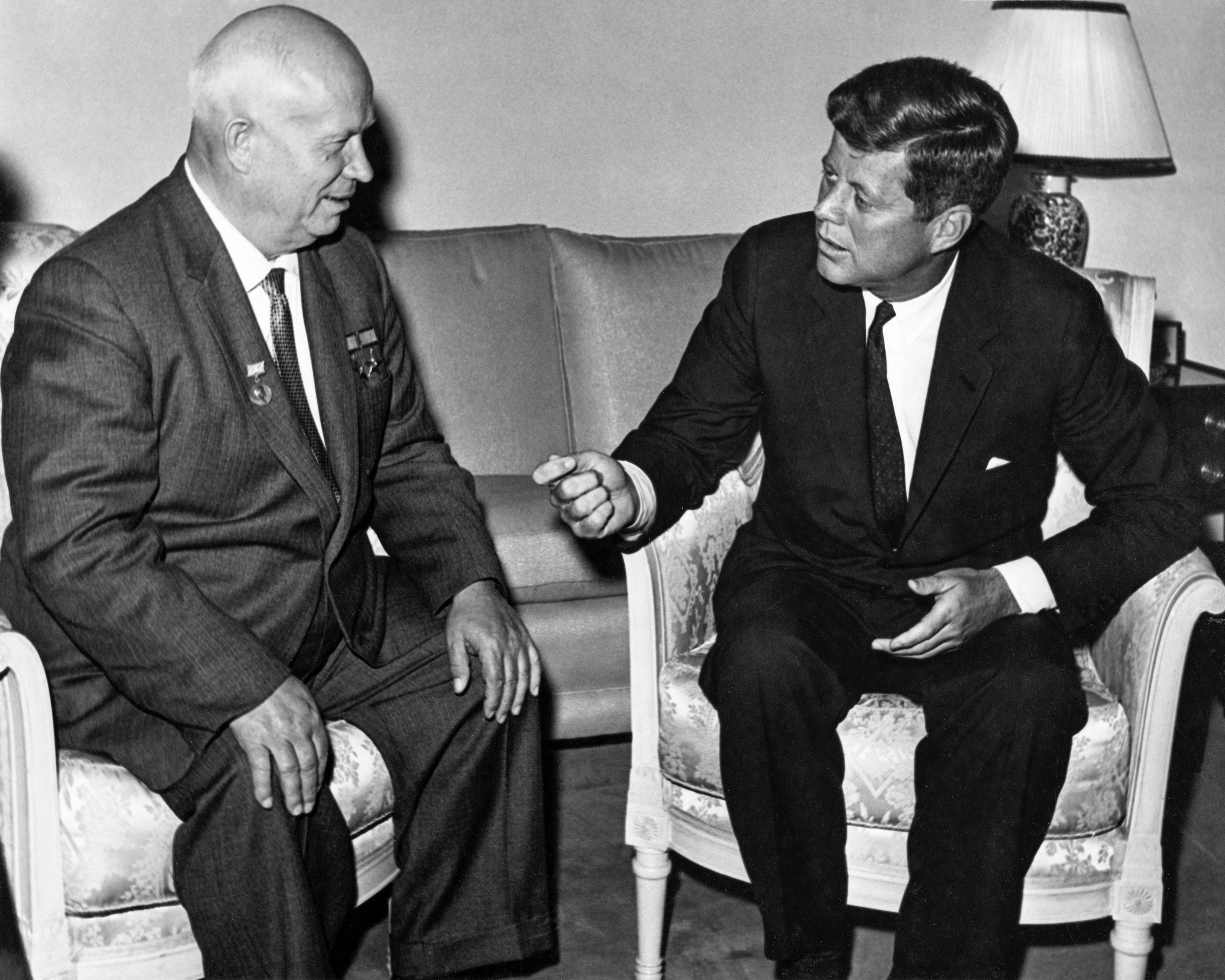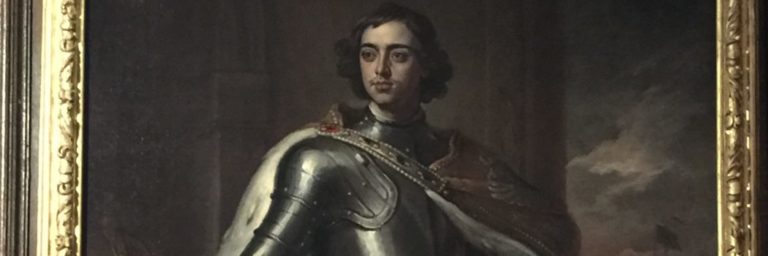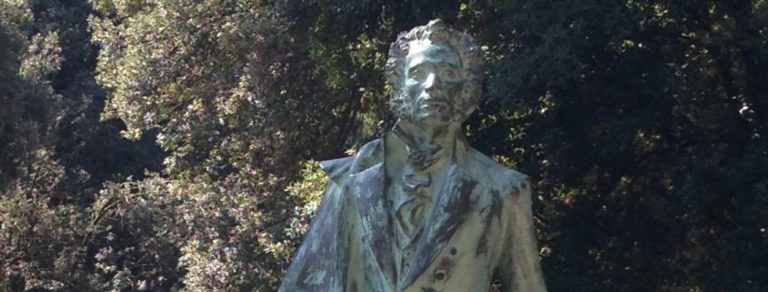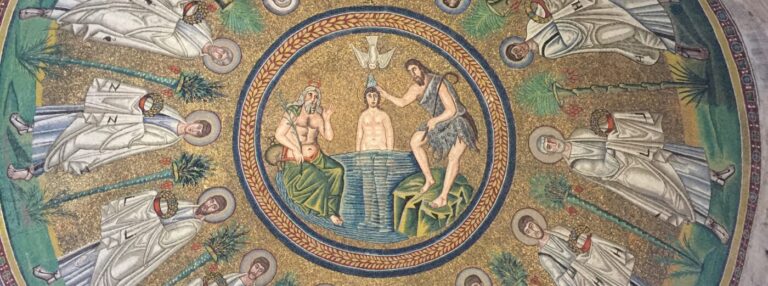In many respects, the Russian Revolution was no surprise. In the Romanov corner, you had Nicholas II, the entrenched, absolute, divinely-inspired autocrat. In the other corner, you had an organized radical group supported by:
- decades of enlightened liberal notions that even serfs and workers had self-worth
- a growing urban worker migration, with all the attendant wage and working condition issues
- a communist economic philosophy encouraging a “power to the people” momentum
- a devastating and unpopular war
- German government support of the radical cause, in hopes of weakening the Russian state
- raging inflation caused by the war
- the proliferation of significant political participants and their conflicting ambitions
Autocrats can often overcome massive dissent because they usually have the command of the military. However, the massive casualties and prisoners lost in the early stages of WWI removed most of the Tsar’s military supporters and replaced them with younger officers more inclined to the leftist messages. Reduced to a small circle of supporters, the Tsar was ousted in February, 1917 CE. It took until October, 1917 CE, for the better organized Bolsheviks to clamor to the top of the opposition heap and put Vladimir Lenin in charge. The Soviet State was born in the face of continuing revolution which took several years to finally bring to a close. In the midst of the fighting, Lenin ordered the royal family murdered.
There are a lot of histories written about the Russian Revolution and its impact. Some thorough treatments include History of the Russian Revolution, by an essential participant, Leon Trotsky; A People’s Tragedy: The Russian Revolution: 1891-1924
, by Orlando Figes, and The Russian Revolution
, by Richard Pipes. For a more concise overview, pick up The Russian Revolution
, by Sheila Fitzpatrick. It is a complex and fascinating tale.
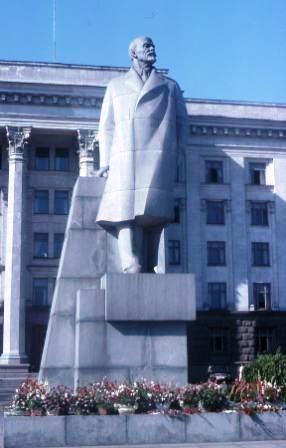
The charismatic ideologue to make this monumental political cataclysm take place was Vladimir Ulyanov, whose revolutionary pen name was “Lenin”. Having studied the liberal philosophies coming out of Europe, he molded his Russian version of the Marxist message.
Russia was still predominantly agrarian, with the beginnings of industrial development only in the major cities. So, where Marx was focused on the working classes of the Industrial Revolution, Lenin saw the “people” in need of empowerment as both industrial workers and agrarian peasants.
For Lenin’s Bolsheviks, the Revolution of 1905, which retained the Tsar and created a Duma (Parliament), was just a win for the Bourgeoisie. He and the other socialist-oriented political factions continued to press for change. Lenin’s writings and speeches spoke of a world where committees of workers, “soviets,” would govern without classes. The World War that was erupting was the logical extension of nationalistic, capitalistic governments and their inevitable imperialism. He saw the oppression of the simple folk, and he envisioned a permanent, worldwide revolution to disrupt the status quo and bring power to the people.
Not everyone agreed with Lenin’s Bolshevik vision. The Mensheviks were somewhat more moderate and saw a partnership of Bourgeoisie and worker/peasants as the coalition to succeed the monarchy. On the other end of the spectrum, Leon Trotsky saw the rapid industrialization of the world and felt that just the working class would be sufficient for the revolution, because the peasants would ultimately turn into the proletariat.
The pressure of the collapsing economy and the unsuccessful war effort bolstered the popularity of the Bolsheviks. By October, 1917, they had enough strength to knock over the Provisional Government, with the last gesture being the attack on the Winter Palace. The Provisional Government was gone and the Bolsheviks put Lenin in charge of the Council of People’s Commissars. His first two actions were to sue for Peace with Germany and to confiscate all lands in the name of the peasant soviets.
Lenin’s public persona was that of a man of the people. However, his pure vision of the global victory of communism was unswerving. As is true of most ideological revolutionaries, he became obsessed with bringing his vision to life, his way. He had no room for compromise and every instinct told him to act to “protect the revolution.” Now that he was in charge, he immediately established a secret police, the Cheka, and took complete control of the press. The man of the people began to transform into an absolute ruler. He clearly inspired the Chinese communist, Mao Zedong, to think in the same terms.
The Treaty with Germany went badly for the Russians as they had no leverage at all. In early 1918, they ceded independence to Finland, Estonia, Latvia, Lithuania, Belarus, and the Ukraine, basically their entire western borderlands. Without these buffers, Lenin moved the capitol from Petrograd (St. Petersburg) to Moscow. This upset some of the remaining royalists and moderates. Along with the other abrupt policy changes, the Bolsheviks continued to have strong opposition and the civil war lasted almost six years. In 1918, there were two assassination attempts on Lenin. His response was a period of “Red Terror,” during which remaining royalist supporters and the Royal Family themselves were murdered. He was determined to stamp out any opposition to the Bolsheviks, and to do it brutally.
Had the Russians followed the lead of Alexander II in 1881, they might have had a peaceful transition to a parliamentary monarchy, like many other European nations. Instead, they traded an absolute monarch for an absolute ideologue, and probably ended up with even less freedom than before the revolution. The Russian public mourned the man they thought stood up for them, when he passed away in 1924. Perhaps, it was because they had never experienced freedom. In the post-Soviet era, even Russian scholars are critical of Lenin’s legacy: Lenin: A New Biography.

If Lenin was driven by a philosophic ideal, it is almost impossible to know what was driving his successor, Joseph Jughashvili, a Georgian who adopted the name “Stalin,” meaning “steel”. Where Lenin sought to stamp out all opposition to his theoretical vision, Stalin did not exhibit the same intellectual imperative. Like Lenin, he addressed all perceived threats with a brutality that may be without historic equal.
While Stalin lived well, by soviet standards, he did not create any impression, then or now, that he was following the well-worn dictatorial pathway to outsized personal wealth. Where Lenin provided the blueprint, Stalin was the engineer to build and protect the revolutionary enterprise of Russia as the exemplary communist proof of concept. His story: Stalin: The Court of the Red Tsar.
Nothing got in Stalin’s way and lived to tell the tale. “Cold-blooded” can only begin to describe his purges, mass relocations, prison camps, post-WWII Eastern Bloc occupations, and outright murders. At the same time, he kick-started Russia’s industrialization and global competitiveness: Stalin in Power: The Revolution from Above, 1928-1941. The only contemporary to match his calculated power politics was Hitler. It was only because Stalin had no hesitation to commit millions of Russian deaths to stop the German Blitzkrieg that Hitler was finally defeated on the Eastern Front. Hitler and Stalin: Parallel Lives
talks about their similarities.
Stalin’s advisors feared him and, ultimately, threw him under the bus after he was gone. They criticized his brutality and the chilling cult of personality Stalin was able to inspire. None of his soviet successors has since come close to the tight grip he had on the Russian populace, in spite of his several complete policy failures. His legacy was a police state in great need of attention.
The two largest Communist governments in our history were the Soviet Union and the People’s Republic of China. There are strong parallels in their experiences. Each regime started in a revolution that was the aftermath of a world war. Each had fiercely dogmatic leaders whose principles had far more theoretical possibility than actual achievement. Just about forty years after each initial revolution, a new leader would arrive who recognized an immediate need to buy, borrow, or mimic western technologies to move their country into the present.
For Russia, in 1956, that man was Nikita Khrushchev. For China, in 1987, it was Deng Xiaoping. Both men were obliged to walk a fine line between the shortcomings of their predecessors and the need to keep their political structure from spiraling out of control. Each succeeded in their own way.
. While Stalin had been effective by being emotionless, Khrushchev was effective through the use of calculated emotional displays. His “Secret Speech” of 1956, taking Stalin to task for his excesses, was a signal for a new start to the Soviet experiment. (There are historians who think he exaggerated his case: Khrushchev Lied: The Evidence That Every “Revelation” of Stalin’s (and Beria’s) Crimes in Nikita Khrushchev’s Infamous “Secret Speech” to the 20th Party Congress of the Communist Party of the Soviet Union on February 25, 1956, is Provably False
). The full Speech: http://www.historyguide.org/europe/khrush_speech.html
He inherited a world in the midst of the “Cold War.” Every American Baby Boomer remembers the air raid drills, the bomb shelters, and the constant tension of those years. Both sides had their time to turn up the heat. Newly minted American President John Kennedy authorized the failed Bay of Pigs attempt to take down Castro’s communist Cuba in April, 1961.
For further embarrassment, Russia shot down a U-2 reconnaissance plane in May. By August, Khrushchev had closed the East German border in Berlin and erected the fabled Berlin Wall. By October, 1962, Kennedy and Khrushchev brought the world to the eve of destruction with the Cuban Missile Crisis. In 1956, Russia reasserted its possessive claim to its Eastern Bloc sphere of influence by squashing the student-led revolt in Hungary. For Westerners, Churchill’s “Iron Curtain” was very real. You couldn’t get in and you couldn’t get out. It was a chilling time: Khrushchev’s Cold War: The Inside Story of an American Adversary.
The thought that America was “behind” in any scientific development shook the Capitol Hill establishment. By September, 1962, President Kennedy announced, “We choose to go to the Moon.” The Space Race, a source of astonishing scientific and technical innovation, was engaged. The full speech: http://er.jsc.nasa.gov/seh/ricetalk.htm
There are some great books on the space race, from both sides, starting with Tom Wolfe’s legendary The Right Stuff. For the Russian story, see Korolev: How One Man Masterminded the Soviet Drive to Beat America to the Moon
. For eyewitness accounts from spacemen on both sides: Two Sides of the Moon: Our Story of the Cold War Space Race
.
The final chapter of the Soviet saga was absolutely as dramatic as any moment in history. From the Western point of view, it was a rare time when peace broke out. The man primarily responsible was Mikhail Gorbachev. Rising through the government ranks, he found himself questioning why great suggestions were ignored and why innovation was a source for suspicion. By the time he reached the pinnacle of power, General Secretary of the Communist Party, he was ready to institute some change.
In 1986, Gorbachev introduced his concepts of Glasnost and Perestroika. He wanted the people to trust and participate in their government and the development of the Union. As a reformer, it is pretty clear that his intentions were to improve the workings of the socialist economic model and the Communist Party. What he got was a full scale political collapse in the face of emphatic shifts of power taken by the people.
The needs of the Russian military completely dominated Soviet spending. Gorbachev saw the need for a radical change in priorities. His vision for change, in his own words:Perestroika: New Thinking for Our Country and the World. In a move that surprised the world, in December, 1988, he announced a unilateral reduction in Soviet military personnel and the withdrawal of Soviet forces from the Warsaw Pact countries. He indicated that the Soviets would no longer interfere in the governments of their allies. What happened next amazed the world: Seven Years that Changed the World: Perestroika in Perspective
1989 will be remembered as the “Year of Miracles”. It was also characterized as “Ten years for Poland, ten months for Hungary, ten weeks for Czechoslovakia, and ten days for Romania!” One by one, the Warsaw Pact countries wrote new constitutions and forced or voted out their Communist leadership.
In the most poignant transition of all, East Germany’s dogmatic General Secretary, Erich Honecker, resigned in October. On November 9, 1989, jubilant Germans knocked down the Berlin Wall. It’s hard not to tear up just remembering these incredible events, described in Reagan and Gorbachev: How the Cold War Ended.
The several separate republics began almost immediately to elect non-communist majorities to their assemblies. By March they began to vote for independence. By August, 1991, Gorbachev resigned as head of the Communist Party. By Christmas, 1991, the Soviet Union was history. Gorbachev’s Memoirs provide a fascinating insight to the entire process. See, also, Armageddon Averted: The Soviet Collapse, 1970-2000
and the recent biography of Pulitzer author William Taubman, Gorbachev: His Life and Times
.
Today, travelers enter the Russian Federation, still the largest country in the world, stretching from St. Petersburg to the Pacific coast of Siberia. Its president is Vladimir Putin, former head of the KGB secret police. Putin’s recent political maneuvers to retain power have started to concern Westerners about the advent of yet another Russian autocrat. Freedom continues to be an elusive goal. His autobiography may shed some light on his policies: First Person: An Astonishingly Frank Self-Portrait by Russia’s President.

